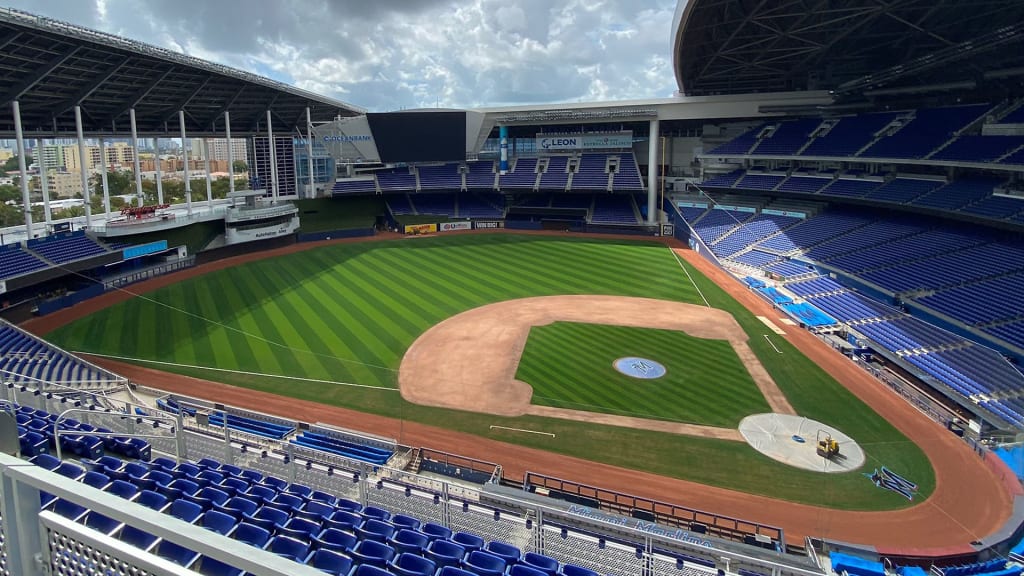
MIAMI -- When baseball is finally played, the playing surface at Marlins Park will look the same as it has in the past. But upon closer review, it will be completely different, because the field has undergone a makeover.
The natural grass that has been used since the ballpark opened in 2012 has been replaced by a new-age synthetic turf that strikingly resembles the real thing.
As MLB has been on pause due to the coronavirus pandemic, the installation of the new playing surface at Marlins Park has been completed.
The switch from natural grass to synthetic turf was addressed on the Marlins’ latest Beyond the Bases podcast, which is available on marlins.com/podcast.
Marlins Radio host Kyle Sielaff broke down the turf change with Marlins vice president of facilities Jeff King.
“The big benefit for us is that it maintains a consistent playing surface that will be safe for our players,” King said during the podcast.
In December, the club announced it would be switching to B1K: Batting A Thousand by Shaw Sports Turf.
“It’s the most advanced synthetic-turf system designed specifically to baseball on the market today,” King said.
The Marlins, D-backs and Rangers are the three MLB parks using the B1K surface.
“They’ve come up with a system that mimics as close to a natural-grass surface as is out there,” King said.
On social media, @MarlinsRadio tweeted a picture of the new playing surface.
From the photo, the surface closely resembles natural grass. By design, the outfield and infield grass are striped with two different shades of green, one darker than the other.
Actually, the entire surface itself is exactly the same. The Shaw system has seven different shades of green, and the Marlins narrowed it down to two.
“They were selected to mimic the mowing patterns that our grounds crews have used in the past at Marlins Park,” King said.
The stripes in the outfield are 7 1/2 feet wide, and the stripes on the infield are 3 feet wide.
When Marlins Park opened in 2012, it used Bermuda grass called Tifway (or Tiff) 419. From 2014-19, Marlins Park used paspalum grass, which held up fairly nicely over the 162-game season. But maintaining the surface was a daily challenge for the grounds crew in the retractable-roof facility. Getting the right amount of sunlight -- in right field, in particular -- was an issue.
“Getting the natural-grass surface to grow was probably our most consistent challenge that we had,” King said.
Now with the B1K turf, the surface is expected to be the same on the last game of the season as it is for the first. Plus, it opens up opportunities to play more high school games at Marlins Park, without risking damaging the surface.
Fans playing catch on the field, on days like Father’s Day and season-ticket holder events, shouldn’t be as much of an issue as in the past.
The synthetic surface and adjusting the outfield fences in center and right-center were the two major ballpark enhancements in the offseason. Center field is going from 407 feet to 400 feet, and right-center from 399 feet to 387 feet.
The surface was ready to be tested by Marlins players about the time MLB cancelled the remainder of Spring Training on March 12. The team had planned on having several players go to Marlins Park in mid-March to see how the field plays.
How fast the field plays also can be adjusted by the grounds crew by adding a certain amount of moisture to the surface. So even though the turf is synthetic, it still will be watered.
“Our goal is to make it play as close to the surface at Marlins Park since 2014-19,” King said. “We wanted to mimic the paspalum surface that we had for six seasons.”


